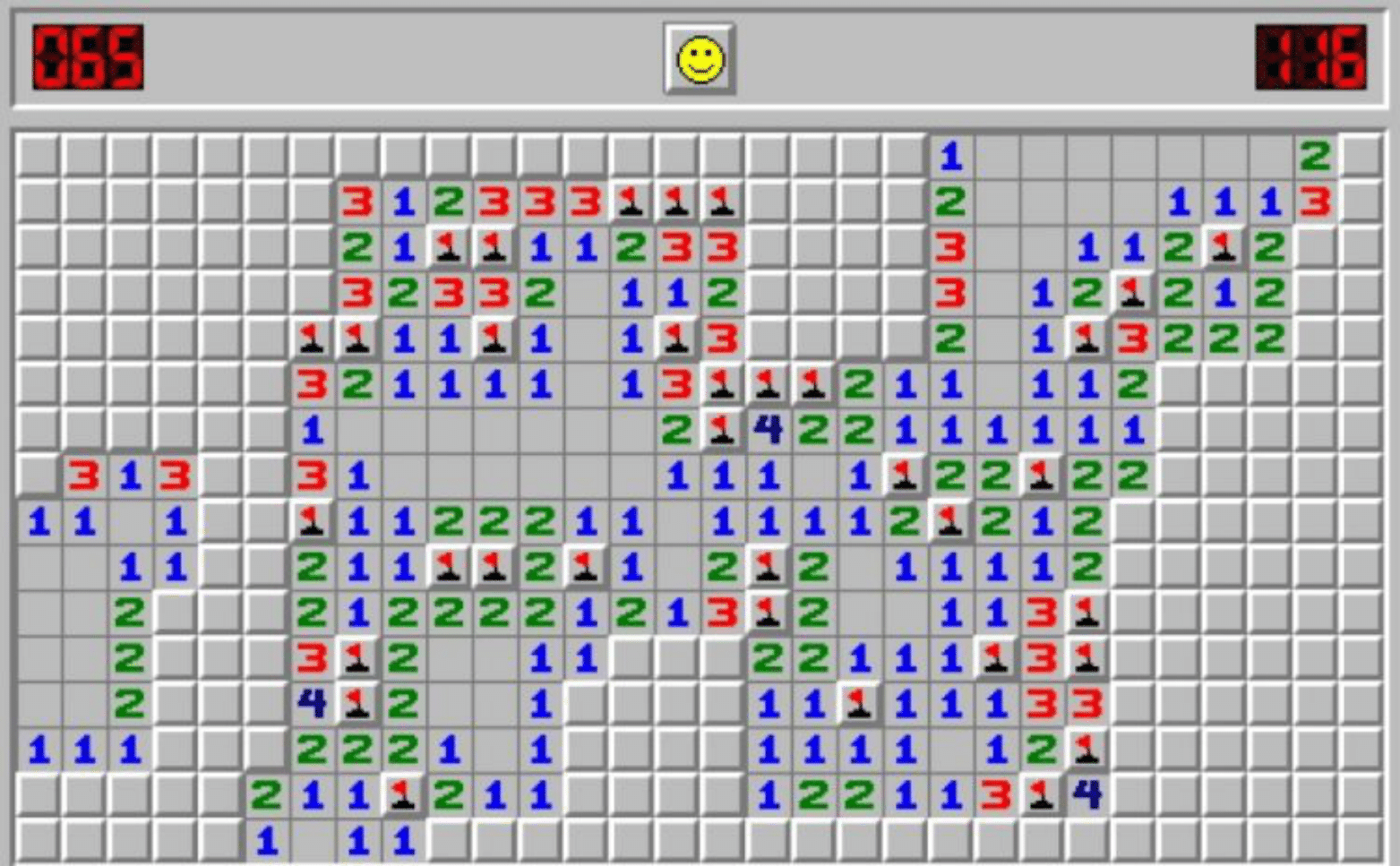2.20. Minesweeper  ¶
¶

In 1989, the legendary game,
Minesweeper was released. The purpose
of this game is to find all clear (not containing a mine) cells for a
given rectangular board \((M\times N)\) by using the information
from the numbers displayed, indicating how many mined neighbors a
clear cell has. In the original game, this neighborhood includes the
cells in 8 (both cardinal and intercardinal) directions.For a different version of the game, we will use cardinal directions
only (i.e. north, south, east and west) and therefore we will check at
most 4 cells to calculate the numbers in the board.
Write a program which outputs the board with the calculated numbers
for clear cells. The input of the board layout is given as a list of
lists, where clear and mined cells are denoted by the
’_’ and
’m’ characters, respectively. For the mined cells, you shall use
the ’m’ character again (that’s why we are thankful for providing
heterogenous lists in python).The board can be in any dimensions. In other words, \(M\) and \(N\) can be any positive integer.
Assume that the nested list of characters will be given to you as variable \(\texttt{B}\).
Sample I/O:
Input:
B = [['m', 'm', '_', '_', '_'],
['m', 'm', '_', '_', '_'],
['_', '_', 'm', '_', '_']]
Output:
[['m', 'm', 1, 0, 0],['m', 'm', 2, 0, 0], [1, 2, 'm', 1, 0]]
Input:
B = [['_', '_', 'm', '_', '_'],
['m', '_', 'm', 'm', 'm'],
['m', '_', '_', '_', '_'],
['_', '_', 'm', '_', 'm'],
['_', '_', '_', '_', '_'],
['m', '_', '_', 'm', 'm'],
['_', 'm', '_', 'm', '_']]
Output:
[[1, 1, 'm', 2, 1], ['m', 2, 'm', 'm', 'm'], ['m', 1, 2, 1, 2], [1, 1, 'm', 2, 'm'], [1, 0, 1, 1, 2], ['m', 2, 1, 'm', 'm'], [2, 'm', 2, 'm', 2]]
Input:
B = [['_', '_', '_', 'm', '_', '_', '_'],
['_', '_', '_', 'm', 'm', 'm', 'm'],
['_', '_', '_', '_', '_', 'm', 'm'],
['m', '_', 'm', '_', 'm', '_', 'm'],
['m', '_', '_', 'm', 'm', 'm', '_'],
['_', '_', '_', '_', 'm', 'm', '_'],
['_', '_', '_', 'm', '_', 'm', '_']]
Output (Shown in separate lines for better visibility):
[[0, 0, 1, 'm', 2, 1, 1],
[0, 0, 1, 'm', 'm', 'm', 'm'],
[1, 0, 1, 1, 3, 'm', 'm'],
['m', 2, 'm', 3, 'm', 4, 'm'],
['m', 1, 2, 'm', 'm', 'm', 2],
[1, 0, 0, 3, 'm', 'm', 1],
[0, 0, 1, 'm', 3, 'm', 1]]
result = []
M, N = len(B), len(B[0])
for r in range(M):
row = []
for c in range(N):
if B[r][c] == 'm':
row.append('m')
continue
mine_count = 0
if r > 0 and B[r-1][c] == 'm': # north
mine_count += 1
if c < (N - 1) and B[r][c+1] == 'm': # east
mine_count += 1
if r < (M - 1) and B[r+1][c] == 'm': # south
mine_count += 1
if c > 0 and B[r][c-1] == 'm': # west
mine_count += 1
row.append(mine_count)
result.append(row)
print(result)